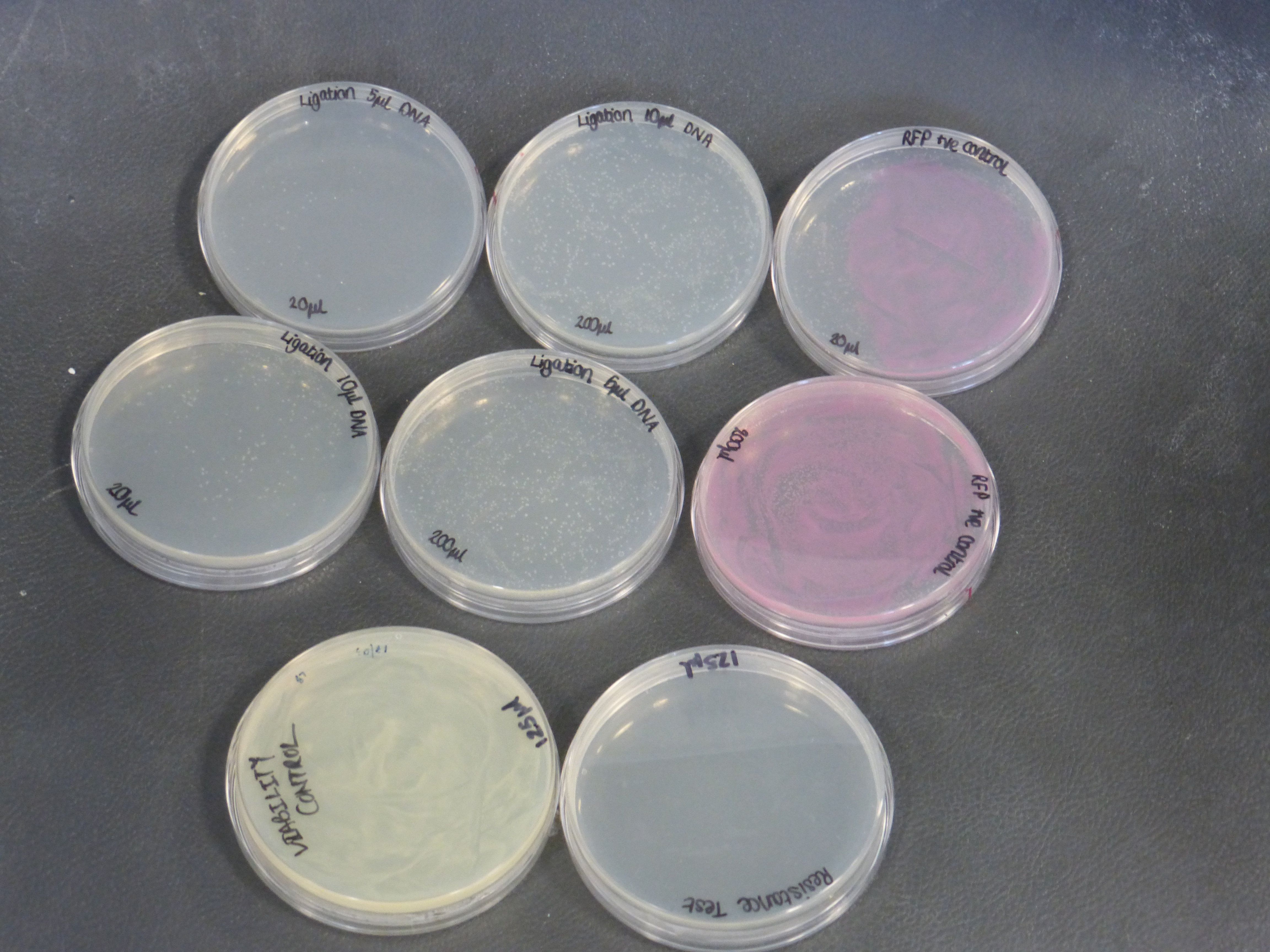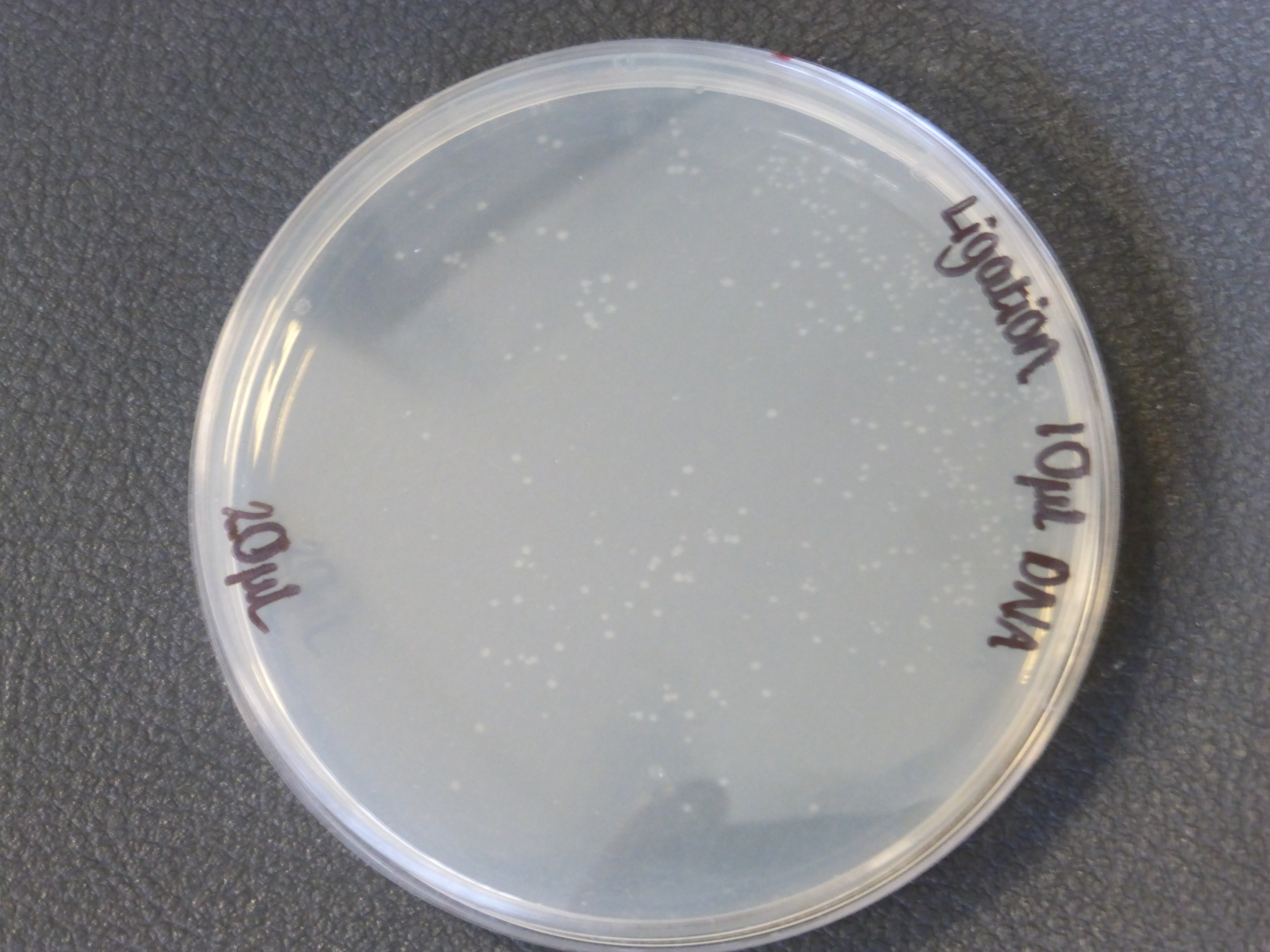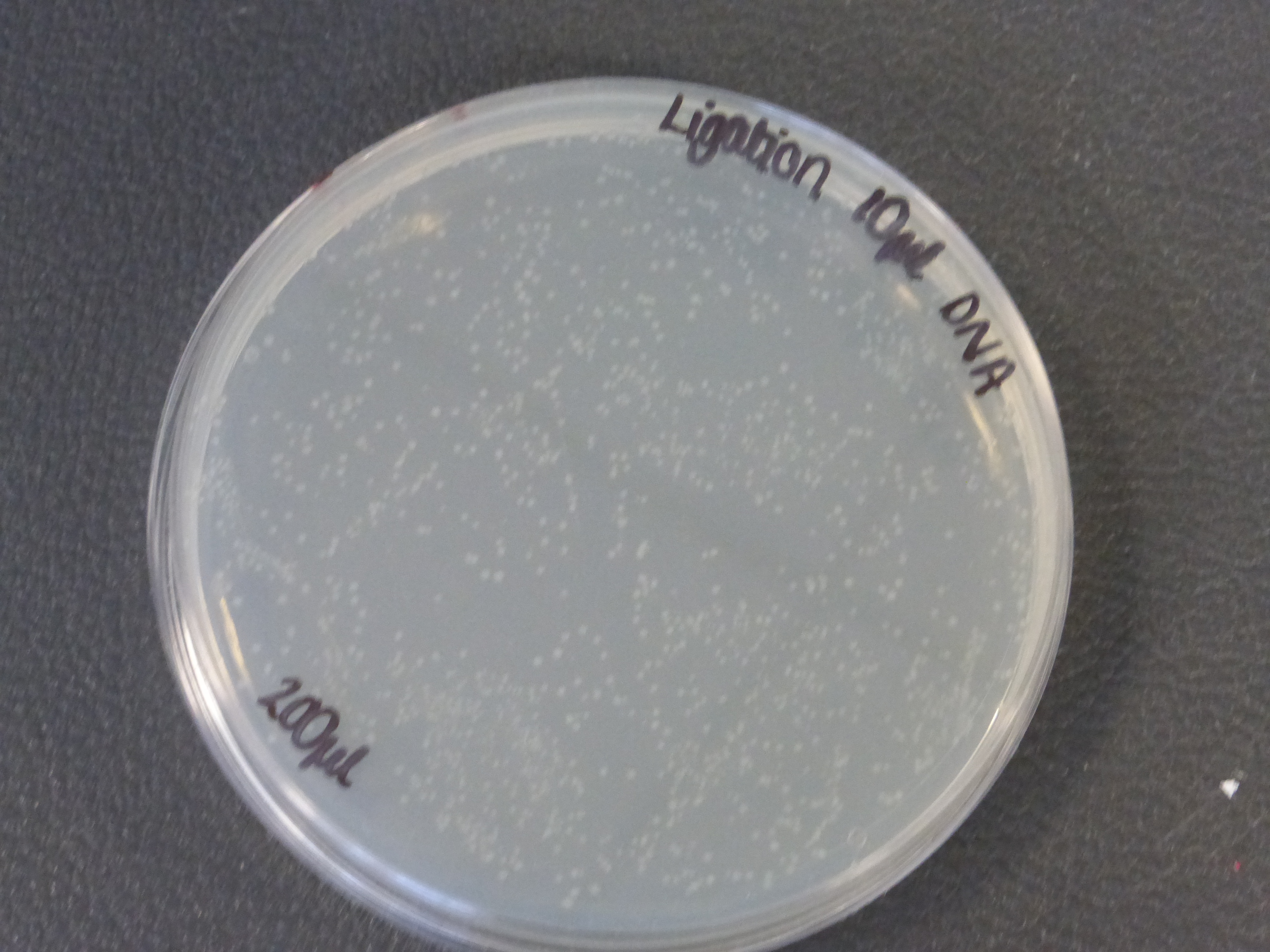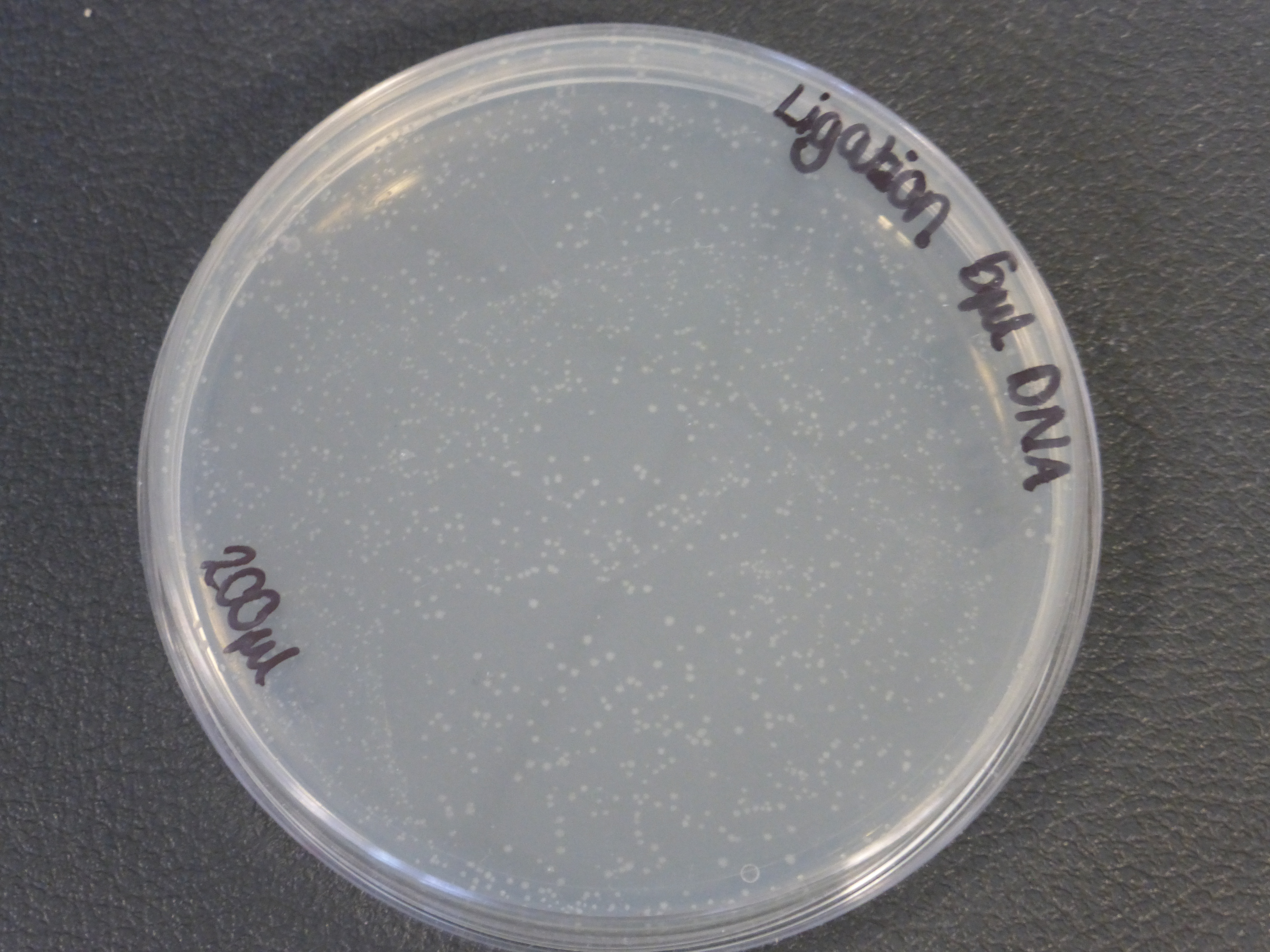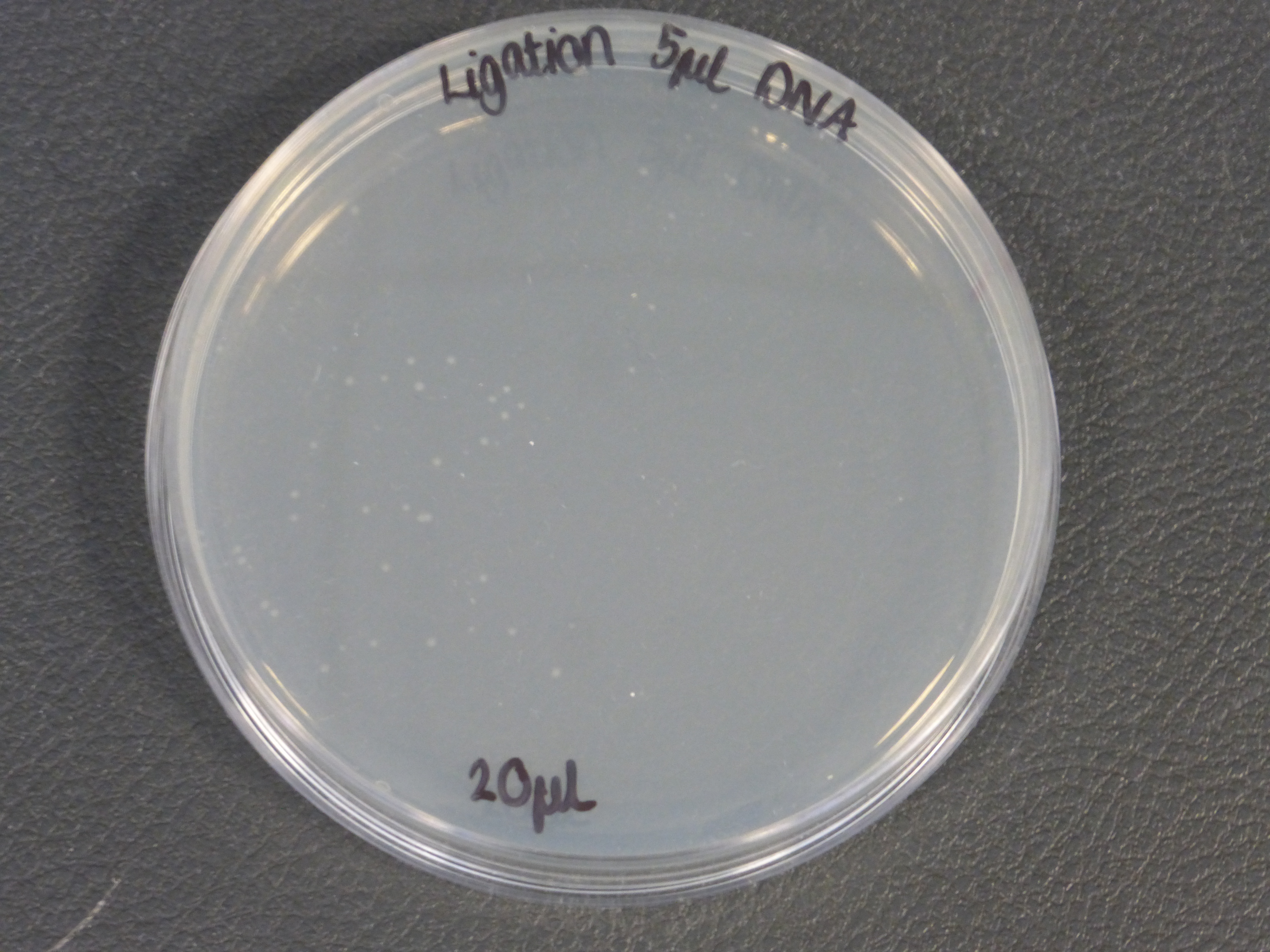02/08/13
From 2013.igem.org
(Difference between revisions)
| Line 20: | Line 20: | ||
*the plates with the ligated DNA did not show growth as the RFP plates, this could be because the cells did not take up as much plasmid as the optimum RFP plasmid or not all the plasmid were ligated with the biobrick. | *the plates with the ligated DNA did not show growth as the RFP plates, this could be because the cells did not take up as much plasmid as the optimum RFP plasmid or not all the plasmid were ligated with the biobrick. | ||
*It is also important to notice that there is not much different in the number of colonies between the 5ul and 10ul plates. | *It is also important to notice that there is not much different in the number of colonies between the 5ul and 10ul plates. | ||
| + | ==Digestion of pSB1C3 backbone== | ||
Revision as of 11:10, 2 August 2013
Results from the transformation plates
- On the 01/08/2013 we plated the transformations containing the biobrick BBa_K118025.
- Our transformations were successful
- the plates contained different volumes of the transformation: 20ul and 200ul
- the plate to test viability shows growth as expected
- the plate to test resistance shows no growth as expected
- there were two different different transformations that contained different volumes of ligated DNA, which were plated into different plates.
- The 10ul ligated DNA plates showed growth
- The 5ul ligated DNA plates showed growth
- The RFP control plates showed growth as expected
- the plates with the ligated DNA did not show growth as the RFP plates, this could be because the cells did not take up as much plasmid as the optimum RFP plasmid or not all the plasmid were ligated with the biobrick.
- It is also important to notice that there is not much different in the number of colonies between the 5ul and 10ul plates.
 "
"
